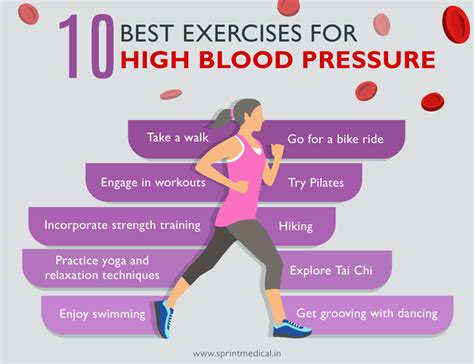
Simple lifestyle changes, including dietary adjustments, regular exercise, and stress management techniques, can significantly lower high blood pressure and improve overall cardiovascular health, as demonstrated by a 60-year-old woman who successfully reduced her blood pressure from a dangerous 170/100 mmHg to a healthy range through consistent lifestyle modifications.
For years, Jane, a 60-year-old woman, battled alarmingly high blood pressure, consistently registering around 170/100 mmHg – a level that significantly increased her risk of heart attack, stroke, and other cardiovascular complications. Medication seemed like the inevitable solution, but Jane was determined to explore whether lifestyle adjustments could offer a viable alternative. With the guidance of her physician and a dedicated commitment to change, Jane embarked on a journey to transform her health, demonstrating that even seemingly small, consistent changes can yield remarkable results. Her success story highlights the power of proactive health management and offers hope to individuals seeking to manage their blood pressure naturally.
Jane’s initial blood pressure readings were a serious cause for concern. A reading of 170/100 mmHg falls well into Stage 2 hypertension, defined by the American Heart Association as systolic pressure of 140 mmHg or higher or diastolic pressure of 90 mmHg or higher. This level of elevated blood pressure places immense strain on the heart and blood vessels, dramatically increasing the risk of severe health problems. Left unmanaged, hypertension can lead to a cascade of complications, including:
- Heart Attack: High blood pressure damages the arteries, making them more susceptible to plaque buildup (atherosclerosis). If a plaque ruptures, it can block blood flow to the heart, resulting in a heart attack.
- Stroke: Similar to heart attacks, plaque buildup or blood clots can block blood flow to the brain, causing a stroke. High blood pressure also weakens blood vessels in the brain, making them more prone to rupture and leading to a hemorrhagic stroke.
- Heart Failure: Over time, the heart has to work harder to pump blood against the increased pressure in the arteries. This can lead to thickening of the heart muscle (left ventricular hypertrophy) and eventually heart failure, where the heart is unable to pump enough blood to meet the body’s needs.
- Kidney Disease: High blood pressure can damage the small blood vessels in the kidneys, impairing their ability to filter waste and excess fluid from the blood. This can lead to chronic kidney disease and ultimately kidney failure.
- Vision Loss: High blood pressure can damage the blood vessels in the eyes, leading to retinopathy (damage to the retina) and potentially vision loss.
- Sexual Dysfunction: High blood pressure can reduce blood flow to the sexual organs, leading to erectile dysfunction in men and decreased libido in both men and women.
- Peripheral Artery Disease (PAD): High blood pressure contributes to the narrowing of arteries in the legs and feet, leading to PAD. PAD can cause pain, numbness, and cramping in the legs, especially during exercise. In severe cases, it can lead to amputation.
Faced with these daunting risks, Jane was motivated to take control of her health. She worked closely with her physician to develop a personalized plan that focused on three key areas: diet, exercise, and stress management.
Dietary Changes: A Focus on the DASH Diet and Sodium Reduction
One of the most significant changes Jane made was adopting a diet rich in fruits, vegetables, and lean protein while drastically reducing her sodium intake. This aligns with the principles of the Dietary Approaches to Stop Hypertension (DASH) diet, which is widely recommended by health professionals for managing high blood pressure. The DASH diet emphasizes:
- Fruits and Vegetables: Rich in potassium, magnesium, and fiber, which help lower blood pressure. Aim for at least 4-5 servings of each per day.
- Whole Grains: Choose whole grains over refined grains for their higher fiber content. Examples include brown rice, whole-wheat bread, and oatmeal.
- Lean Protein: Opt for lean protein sources such as poultry, fish, beans, and lentils. Limit red meat, which can be high in saturated fat.
- Low-Fat Dairy: Choose low-fat or fat-free dairy products like milk, yogurt, and cheese.
- Nuts and Seeds: These are good sources of healthy fats, magnesium, and potassium. However, consume them in moderation due to their high calorie content.
Jane meticulously tracked her sodium intake, aiming to stay below the recommended limit of 2,300 milligrams per day. She became a label-reading expert, scrutinizing food packaging for hidden sources of sodium. She also learned to cook more meals at home, using fresh ingredients and avoiding processed foods, which are often laden with sodium.
“The biggest change was really paying attention to what I was eating,” Jane said. “I was shocked at how much sodium was in some of my favorite foods. Once I started cooking more at home and using fresh ingredients, I could really control what was going into my body.”
Cutting back on sodium can be challenging, as it’s often hidden in unexpected places. Here are some tips for reducing sodium intake:
- Read Food Labels: Pay attention to the sodium content per serving and choose products with lower sodium levels. Look for labels that say “low sodium,” “reduced sodium,” or “no salt added.”
- Cook at Home: Cooking at home allows you to control the ingredients and avoid adding excessive salt.
- Use Herbs and Spices: Flavor your food with herbs, spices, lemon juice, or vinegar instead of salt.
- Rinse Canned Foods: Rinsing canned beans, vegetables, and tuna can remove some of the sodium.
- Avoid Processed Foods: Processed foods like canned soups, frozen meals, and deli meats are often high in sodium.
- Limit Restaurant Meals: Restaurant meals can be high in sodium. Ask your server if they can prepare your food with less salt.
- Be Aware of Hidden Sodium: Sodium can be found in unexpected places like baking soda, baking powder, and some medications.
Regular Exercise: Finding Joy in Movement
In addition to dietary changes, Jane incorporated regular physical activity into her daily routine. She started with brisk walking, gradually increasing the duration and intensity of her workouts. She also discovered a love for swimming and yoga, which provided both cardiovascular benefits and stress relief.
The American Heart Association recommends at least 150 minutes of moderate-intensity aerobic activity or 75 minutes of vigorous-intensity aerobic activity per week, or a combination of both. Moderate-intensity activities include brisk walking, cycling, and swimming, while vigorous-intensity activities include running, hiking uphill, and swimming laps.
Exercise helps lower blood pressure through several mechanisms:
- Improved Cardiovascular Function: Exercise strengthens the heart muscle, allowing it to pump more blood with each beat. This reduces the strain on the arteries and lowers blood pressure.
- Weight Management: Exercise helps burn calories and maintain a healthy weight. Obesity is a major risk factor for high blood pressure.
- Reduced Stress: Exercise releases endorphins, which have mood-boosting effects and can help reduce stress.
- Improved Insulin Sensitivity: Exercise improves the body’s ability to use insulin, which can help lower blood pressure and reduce the risk of type 2 diabetes.
- Vasodilation: Exercise can cause blood vessels to widen (vasodilation), which lowers blood pressure.
“I never really enjoyed exercise before, but I started to find activities that I actually looked forward to,” Jane said. “Swimming was a game-changer for me. It’s low-impact and a great way to relieve stress.”
Finding an exercise routine that you enjoy is crucial for long-term adherence. Here are some tips for incorporating exercise into your daily life:
- Start Slowly: If you’re new to exercise, start with short, low-intensity workouts and gradually increase the duration and intensity as you get fitter.
- Find Activities You Enjoy: Choose activities that you find fun and engaging. This will make it more likely that you’ll stick with your exercise routine.
- Set Realistic Goals: Set achievable goals to stay motivated.
- Exercise with a Friend: Exercising with a friend can make it more enjoyable and help you stay accountable.
- Make it a Habit: Schedule exercise into your daily routine and treat it like any other important appointment.
- Take the Stairs: Choose the stairs instead of the elevator whenever possible.
- Walk During Lunch Breaks: Take a brisk walk during your lunch break.
- Park Far Away: Park farther away from your destination and walk the extra distance.
Stress Management Techniques: Finding Calm in the Chaos
Chronic stress can significantly contribute to high blood pressure. When you’re stressed, your body releases hormones like cortisol and adrenaline, which can temporarily increase your heart rate and blood pressure. Over time, chronic stress can damage your blood vessels and increase your risk of heart disease.
Jane incorporated several stress management techniques into her daily routine, including mindfulness meditation, deep breathing exercises, and spending time in nature.
Mindfulness meditation involves focusing on the present moment without judgment. It can help reduce stress, anxiety, and depression. Deep breathing exercises can help calm the nervous system and lower blood pressure. Spending time in nature has been shown to have numerous health benefits, including reducing stress, lowering blood pressure, and improving mood.
“I used to be constantly stressed and overwhelmed,” Jane said. “Learning to manage my stress has made a huge difference in my overall health and well-being. Meditation has become a daily practice for me, and I try to spend as much time as possible outdoors.”
Here are some additional stress management techniques that can help lower blood pressure:
- Yoga: Yoga combines physical postures, breathing exercises, and meditation to promote relaxation and reduce stress.
- Tai Chi: Tai chi is a gentle form of exercise that involves slow, flowing movements. It can help improve balance, coordination, and stress levels.
- Progressive Muscle Relaxation: This technique involves tensing and relaxing different muscle groups in your body to relieve tension.
- Spending Time with Loved Ones: Social support can help buffer the effects of stress.
- Engaging in Hobbies: Hobbies can provide a sense of purpose and enjoyment, which can help reduce stress.
- Getting Enough Sleep: Lack of sleep can increase stress levels and raise blood pressure. Aim for 7-8 hours of sleep per night.
- Limiting Caffeine and Alcohol: Caffeine and alcohol can both increase blood pressure.
The Results: A Transformation in Health
After several months of consistent effort, Jane’s hard work paid off. Her blood pressure readings dropped significantly, eventually stabilizing in a healthy range. “I was amazed at how much my blood pressure improved,” she said. “I went from being worried about having a heart attack or stroke to feeling healthier and more energetic than I have in years.”
Jane’s success story is a testament to the power of lifestyle changes in managing high blood pressure. While medication may be necessary for some individuals, lifestyle modifications can often be an effective first-line treatment. Even small, consistent changes can have a profound impact on your health.
Expert Opinions and Recommendations
Medical experts emphasize the importance of a holistic approach to managing high blood pressure, combining lifestyle changes with medication when necessary.
“Lifestyle modifications are the cornerstone of hypertension management,” says Dr. Sarah Miller, a cardiologist at a leading hospital. “Diet, exercise, and stress management are all crucial components of a comprehensive treatment plan. While medication can be effective, it’s important to address the underlying lifestyle factors that contribute to high blood pressure.”
Dr. Miller also stresses the importance of regular blood pressure monitoring. “It’s essential to monitor your blood pressure regularly, both at home and at your doctor’s office,” she says. “This will help you track your progress and make adjustments to your treatment plan as needed.”
The American Heart Association recommends that all adults have their blood pressure checked at least every two years, starting at age 20. Individuals with risk factors for high blood pressure, such as obesity, family history, or diabetes, may need to have their blood pressure checked more frequently.
Conclusion: Empowering Individuals to Take Control
Jane’s story serves as an inspiration to individuals struggling with high blood pressure. It demonstrates that proactive health management and a commitment to lifestyle changes can lead to significant improvements in cardiovascular health. By adopting a healthy diet, engaging in regular exercise, and managing stress effectively, individuals can take control of their blood pressure and reduce their risk of heart disease. While Jane’s story is inspiring, it’s vital to consult with a physician before making significant lifestyle changes, especially if you are currently taking medication for high blood pressure or other health conditions. A healthcare professional can help you develop a safe and effective plan tailored to your individual needs.
Frequently Asked Questions (FAQ)
- What is considered high blood pressure and when should I be concerned?
High blood pressure, or hypertension, is generally defined as a blood pressure reading of 130/80 mmHg or higher. The American Heart Association categorizes blood pressure as follows:
- Normal: Less than 120/80 mmHg
- Elevated: Systolic between 120-129 and diastolic less than 80
- Stage 1 Hypertension: Systolic between 130-139 or diastolic between 80-89
- Stage 2 Hypertension: Systolic 140 or higher or diastolic 90 or higher
- Hypertensive Crisis: Systolic higher than 180 and/or diastolic higher than 120 (requires immediate medical attention)
You should be concerned if your blood pressure consistently falls into the elevated or hypertension categories. Regular monitoring and consultation with a healthcare professional are crucial. If you experience a hypertensive crisis, seek immediate medical attention.
- What are the first steps I should take if I’ve been diagnosed with high blood pressure?
The first steps after being diagnosed with high blood pressure should involve consulting with your physician to create an individualized treatment plan. This typically includes:
- Lifestyle Modifications: Your doctor will likely recommend lifestyle changes, such as adopting a heart-healthy diet (like the DASH diet), reducing sodium intake, engaging in regular physical activity, maintaining a healthy weight, and managing stress.
- Regular Monitoring: Regularly monitor your blood pressure at home and keep your doctor informed of your readings.
- Medication Evaluation: Depending on the severity of your hypertension and other risk factors, your doctor may prescribe medication. It’s essential to follow your doctor’s instructions and attend follow-up appointments.
- Risk Factor Assessment: Assess and manage other risk factors for heart disease, such as high cholesterol, diabetes, and smoking.
- How quickly can lifestyle changes lower blood pressure?
The timeline for seeing a reduction in blood pressure through lifestyle changes can vary. Some individuals may notice improvements within a few weeks, while others may take several months. Consistency is key. Factors influencing the speed of results include:
- Initial Blood Pressure Levels: Individuals with higher initial blood pressure may see a more rapid decline as they implement lifestyle changes.
- Adherence to Recommendations: Consistently following dietary guidelines, exercising regularly, and managing stress will lead to faster results.
- Individual Metabolism: Metabolic factors and overall health can influence how quickly lifestyle changes impact blood pressure.
- Other Health Conditions: The presence of other health conditions, such as diabetes or kidney disease, can affect the timeline.
It’s essential to work with your healthcare provider to monitor your progress and adjust your treatment plan as needed.
- What are some effective and easy-to-incorporate stress management techniques for lowering blood pressure?
Effective and easily incorporated stress management techniques include:
- Deep Breathing Exercises: Practice deep, slow breathing for a few minutes each day. Inhale deeply through your nose, hold for a few seconds, and exhale slowly through your mouth.
- Mindfulness Meditation: Dedicate a few minutes each day to mindfulness meditation. Focus on your breath, body sensations, or present-moment experiences without judgment.
- Progressive Muscle Relaxation: Systematically tense and relax different muscle groups in your body to release tension.
- Spending Time in Nature: Even short periods spent outdoors can reduce stress and lower blood pressure.
- Engaging in Hobbies: Pursue hobbies and activities that you enjoy to promote relaxation and well-being.
- Yoga or Tai Chi: These practices combine physical activity with mindfulness and relaxation.
- Social Connection: Spend time with loved ones and build a strong social support network.
- Are there any over-the-counter supplements or natural remedies that can help lower blood pressure?
Several over-the-counter supplements and natural remedies are often touted for their blood pressure-lowering effects, but it’s essential to exercise caution and consult with your healthcare provider before using them. Some commonly discussed supplements include:
- Potassium: Potassium helps balance sodium levels in the body. However, too much potassium can be harmful, especially for individuals with kidney problems.
- Magnesium: Magnesium plays a role in regulating blood pressure and may help relax blood vessels.
- Coenzyme Q10 (CoQ10): Some studies suggest that CoQ10 may help lower blood pressure, but more research is needed.
- Garlic: Garlic has been shown to have mild blood pressure-lowering effects.
- Hibiscus: Hibiscus tea may help lower blood pressure.
- Omega-3 Fatty Acids: Found in fish oil, omega-3 fatty acids may have a modest effect on blood pressure.
It’s crucial to discuss any supplements or natural remedies with your doctor, as they may interact with medications or have potential side effects. Lifestyle changes remain the primary and most evidence-based approach to managing high blood pressure. Supplements should not be used as a substitute for medical treatment.









